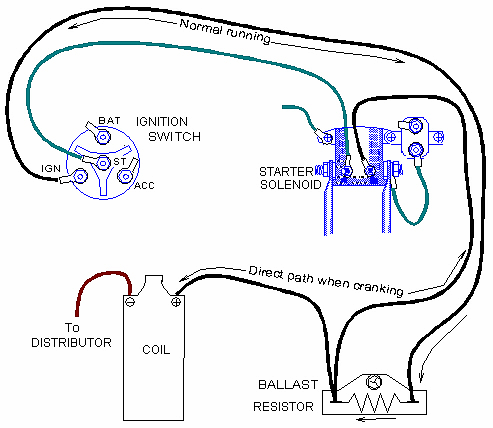Ignition Troubleshooting |
|
IGNITION CIRCUITThe original car used a standard ignition circuit that incorporated a single or dual-point distributor. Most kits today will use an electronic distributor, and many use a multi-spark unit such as the MSD. When you hook up your system, check whether the distributor requires a ballast resistor. Some - notably some of the Mallory units - will have considerably shortened life if run with the full system voltage. The ballast resistor serves to reduce the voltage that the coil sees - typically to 8 or 9 volts. When the starter is cranking the engine, the ballast resistor is bypassed by a contact in the starter solenoid, thereby allowing full voltage to the coil. Because cranking load will lower the battery voltage, the coil will see a somewhat reduced voltage. |
 |
TROUBLESHOOTING:
Symptom - Car starts but immediately dies when you release the key.
Disconnect the connections at the ballast resistor. Measure the voltage (or check with a test light) the voltage between the single wire and ground. If there is power there, the ballast resistor is likely bad. Reconnect the wires and measure the voltage at the positive side of the coil. If you see 8-13 volts, you may have a bad coil. If you measure less than 8 volts, replace the ballast resistor.
If there is no power at the single wire of the ballast resistor, check the voltage at the IGN terminal of the ignition switch. If there is no power there, replace the switch.
If there is power at the switch, check the multi-connectors between the dash harness and the front harness. It will be the same color as the single wire connection at the ballast resistor: a white, yellow, or green/violet wire, depending upon the vintage of your kit.